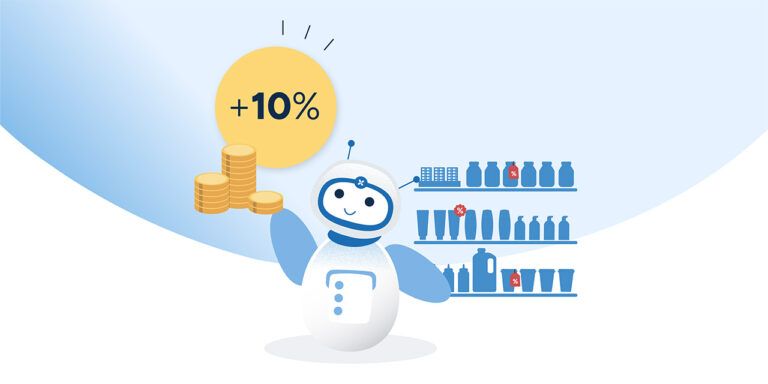Why markdown optimization Is essential to store reopening strategies
May 7, 2020 • 3 min
Markdowns are an essential part of retail strategy — whether you’re trying to clear out old stock to make room for an assortment change, sell through seasonal items before the season ends, or move fresh products before their spoilage dates. Unfortunately, while markdowns are inevitable, they can also be costly; one study of non-grocery retailers estimated annual revenue loss at $300B in the US alone — or about 12% of total sales.
Markdowns don’t have to be a loss center in retail though. Quite the opposite — if your brick-and-mortar stores are currently closed due to coronavirus restrictions, markdown should actually be an integral part of your strategy to return to profitability.
A Powerful Tool for COVID-19 Response
Many retailers have non-essential stock taking up space right now because customers are buying fewer recreational and luxury items. Another common challenge we’ve observed is that aggressive buying during the initial demand spike has left some retailers with more inventory than they can sell now that demand has leveled out.
With the right tools and approach in place, though, markdown optimization will position businesses to manage these inventory challenges and ramp up quickly when stores reopen. Markdown optimization ensures retailers can recoup lost sales at the best possible margin and clear inventory to make room for new items as customers flood back to brick-and-mortar shopping.
Some retailers are able to pick from the inventory already on shelves in their closed stores to meet their increased online sales. By optimizing markdowns for online channels right now, these retailers can turn over as much assortment as possible before reopening. When brick and mortar shoppers return, retailers will have both the capital and the space to offer the items their customers will want to purchase.
If closed stores are inaccessible for online fulfilment, markdown optimization becomes even more critical to help retailers swiftly meet the goals that support their reopening strategy. RELEX’s solution, for example, can optimize pricing to sell through markdown stock by a target date or to maximize sales and margins on that inventory, depending on your business’s approach.
Optimization Alleviates Common Markdown Pain Points
The role of markdowns in reopening strategies is clear, but for too many retailers, it remains a heavily manual, time-consuming process. Planners without a strong markdown optimization software have little ability to proactively identify products that would benefit from markdown until the stocking issue is so obvious it’s already causing problems. Some retailers execute markdowns on an ad hoc basis without sufficient foresight and structure, while others err toward too much structure, marking down products based on broad, predetermined rule sets that don’t necessarily serve each category or product’s needs. Either way, poorly planned and executed markdown strategies can’t give planners visibility into the impact of markdowns across categories on the overall business.
As retailers plan for store reopenings, though, a markdown optimization software will save busy planning teams valuable time, allowing them to focus their attention on establishing the “new normal” in demand patterns and communicating your business’s needs to your vendors. Such a solution should be able to automatically identify those items that will benefit most from markdown, then optimize pricing to match your specific business goals — whether selling through inventory or maximizing margin. Your solution should be able to achieve this at the store-level of granularity, to ensure customer variation is taken into account for each location.
The Benefits of Markdown Optimization Software
But beyond lifting the burden of manual processes from busy planning teams, an advanced markdown optimization software should also improve outcomes. The customers we’ve worked with have seen significant results, including:
- 15-20% lower end stock
- 133% increase in marked down inventory turnover
- 94% higher sales than projected without markdown
- 4.9% margin growth
Retailers seeking a new technology solution to improve markdown performance should begin with their forecasting tool. It’s critical that your new markdown software be able to integrate with it to make best use of that valuable forecast data.
Ideally, though, your demand forecasting solution has its own markdown optimization functionality that will let you sidestep lengthy back-end integrations between platforms and instead see rapid time-to-money. A unified tool will add even greater value, pulling automatically from demand and promotional forecasts, then applying markdown period forecasts to replenishment and allocation plans.
Above all, the solution should be flexible. The supply chain crisis that resulted from COVID-19 made clear that technology solutions must help retailers adapt quickly to extreme change. Under any conditions, retail planners are empowered by the ability to quickly test multiple scenarios and flexible configurations that don’t require back-end coding. But especially in turbulent times, retailers must turn to best-in-class tools to drive informed business decisions and better results.



